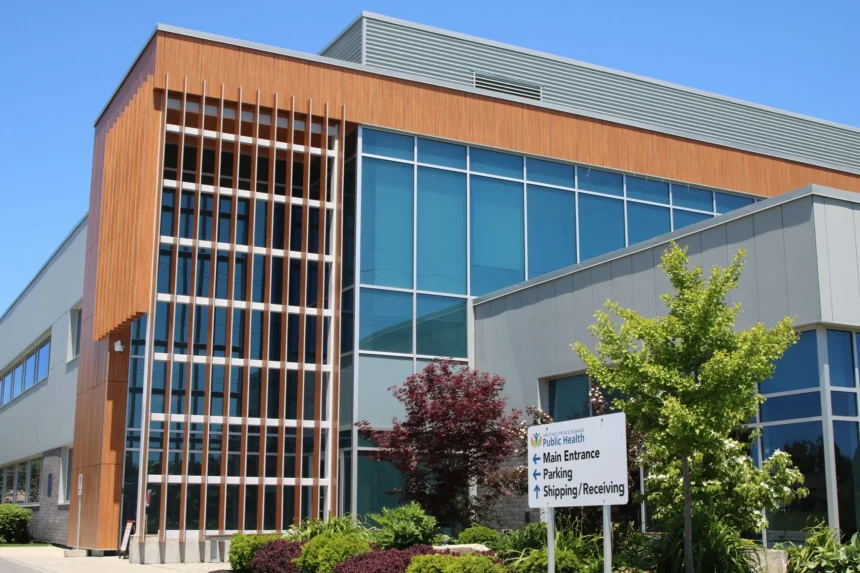The late afternoon light filters through the windows of the Belleville Public Health office as Dr. Ethan Laurier, the newly appointed chief medical officer for South East Public Health, spreads a series of budget documents across the conference table. It’s his third week on the job, and the provincial funding announcement has just landed.
“This changes everything,” he tells me, tapping the document that outlines the $4.3 million in harmonization funding coming to the region. “After years of doing more with less, we’re finally getting resources that match our community’s needs.”
The funding announcement, made yesterday by Ontario’s Ministry of Health, represents the largest single investment in the newly amalgamated South East Health Unit since its formation in 2023. The unit serves more than 200,000 residents across Hastings, Prince Edward, Lennox and Addington counties.
For residents of smaller communities like Wellington, Napanee, and Bancroft, this funding could mean the difference between driving an hour for maternal health services and having them available locally.
“We’ve always been caught in this impossible situation,” explains Marianne Thibault, a public health nurse who’s worked in the region for 22 years. “Rural communities have unique health challenges that often get overlooked in provincial funding models. This harmonization money acknowledges those disparities.”
The funding comes as part of Ontario’s Health System Stabilization Initiative, which aims to address regional inequities that became glaringly apparent during the pandemic. According to data from Statistics Canada, rural communities saw 23% fewer public health services during COVID-19 despite having populations with higher average ages and more chronic health conditions.
Walking through the Belleville office, evidence of budget constraints is everywhere: outdated computer systems, cramped examination rooms, and staff areas that double as storage. A nurse practitioner conducts a telehealth appointment in what appears to be a converted supply closet.
When asked how the $4.3 million will be allocated, Dr. Laurier explains the unit’s three-phase approach. “First, we’re addressing immediate infrastructure needs—updating equipment and digital systems that have been patched together for years. Second, we’re expanding our mobile health services for rural communities. And third, we’re investing in preventative programs.”
That third phase particularly excites Catherine DuBois, director of community health promotion. “Prevention is always more cost-effective than treatment, but it’s historically been the first thing cut when budgets tighten,” she says. “We’ve developed evidence-based programs for seniors’ fall prevention, youth mental health, and maternal nutrition that have been sitting on shelves for years.”
The funding arrives at a critical time. A recent report from the Ontario Medical Association identified the South East region as having one of the province’s highest rates of preventable hospitalizations—cases where earlier intervention could have avoided an emergency room visit or admission.
For Michelle Kwanasie, a mother of three living in Deseronto, the news brings hope. “Last winter, my youngest had respiratory issues, and I had to drive almost an hour in a snowstorm to see someone,” she recalls. “If they can put some of this money toward extending hours or bringing services closer to smaller communities, that makes a huge difference for families like mine.”
The harmonization funding doesn’t just address geographical inequities. Dr. Laurier points out that nearly 20% will be directed toward programs serving Indigenous communities and new Canadians, populations that have historically faced barriers to health services.
“We’ve been working closely with Tyendinaga Mohawk Territory leadership to understand how we can better support their community health initiatives,” says Dr. Laurier. “This funding allows us to move from conversation to action.”
The Ministry of Health has emphasized accountability, requiring quarterly reports on how the funds are being utilized. This transparency has been welcomed by local advocacy groups who have long pushed for more equitable health funding in the region.
“What makes this different from previous one-time funding is that it’s structured as ongoing support,” explains Dr. Laurier. “This isn’t just a temporary boost—it’s allowing us to build sustainable programs and hire permanent staff.”
Health policy experts from Queen’s University have pointed out that the South East region has historically received about 15% less per capita in public health funding compared to the provincial average, according to an analysis of Ontario Public Health Standards funding data.
As the evening shadows lengthen, Dr. Laurier is still at his desk, reviewing staffing plans. The unit plans to hire 12 new positions, including public health nurses, outreach workers, and a data analyst to track the impact of new programs.
“The true measure of this funding won’t be in budget documents,” he reflects. “It will be in the health outcomes we see one, five, ten years from now. Are fewer people ending up in emergency rooms? Are we seeing better birth outcomes? Are seniors staying independent longer? That’s how we’ll know if we’ve used these resources wisely.”
For residents across the South East region, the $4.3 million represents something more immediate and tangible: a sign that their health needs matter just as much as those in larger urban centers.
As I leave the health unit, a maintenance worker is measuring windows for new signage that will display the organization’s updated mission: “Equitable health services for every community.” With this harmonization funding, that statement may finally become more than just words on a wall.






